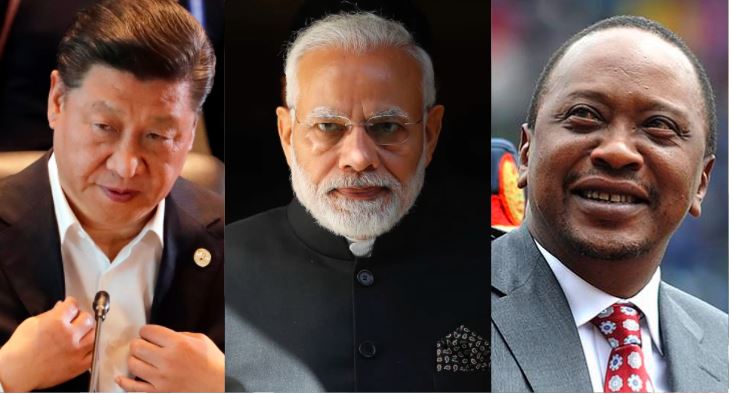India’s Foreign Minister Dr S Jaishankar is on a three-day visit to Kenya. He is looking to further improve bilateral relations between the two countries, and as a part of this effort, Dr Jaishankar met Kenya’s top ministers and discussed building a comprehensive partnership between the two countries. While India is looking to improve its ties with Kenya, the real object is to kick China out of the country that functions as a costal hub and remains the largest economy in East Africa.
China wants to take control of strategic infrastructure like ports and railways in Kenya, with a spate of predatory loans and debt traps as a part of Chinese President Xi Jinping’s flagship Belt and Road Initiative (BRI) investments in the country.
India discussed collaboration with Kenya in several sectors, namely trade and investment, defence and security cooperation, development partnerships in regional and multilateral fora, as well as people-to-people interaction.
Led by External Affairs Minister #SJaishankar, #India has kicked off discussions with #Kenya to enhance collaboration in areas of trade & investment, defence & security cooperation, development partnerships in regional & multilateral fora, as well as people-to-people interaction. pic.twitter.com/P4QCc70oSW
— IANS (@ians_india) June 14, 2021
In fact, India and Kenya have actually managed to reach a breakthrough. New Delhi has extended support to Kenya’s domestic programs listed under the East African nation’s “Big Four Agenda”. Kenya’s President Uhuru Kenyatta has Big Four priorities for Kenya on his radar- manufacturing, affordable housing, universal health, and food security.
Accordingly, India will be supporting projects in Kenya that seek the construction of 500,000 new affordable homes, universal health coverage, 100 per cent food security, and enhancement in manufacturing to 20 per cent of the GDP by 2022. India itself has tasted recent success in the sectors of affordable housing, health coverage, food security and manufacturing at a domestic level. Therefore, the Kenyatta administration is likely to repose faith in collaboration with India.
What India’s benevolent involvement also does is that it creates a lot of leverage for Kenya in its desire to reduce reliance on China. Presently, Beijing does enjoy a lot of influence in Kenya. The East African nation is a part of China’s BRI and afflicted by the ubiquitous menace in Africa called the Chinese debt trap.
Let’s talk numbers. Kenya owes $9 billion to China in debt, largely on account of BRI projects. Needless to mention, China is Kenya’s biggest lender. The East African nation is already using one-third of its revenue to service Chinese debt obligations. BRI lending in Kenya pushed the debt to GDP ratio from 50.2 per cent at the end of 2015 to 61.7 per cent at the end of 2019.
However, Kenya does understand how the paper dragon is trying to trap it under debt obligations. In fact, it is no secret that China wanted to gain control of Kenya’s Mombasa port, but the East African nation turned out to be too smart for the paper dragon.
Since 2013, Kenya accepted $5 billion in loans from Beijing for a BRI project called Standard Gauge Railways (SGR). The SGR is the largest infrastructure project in Kenya, but it recorded losses to the tune of $98 million in its first year of operation. Mombasa port’s assets were placed as collateral for SGR loans, which triggered speculations that China could wrest control of the lucrative port from Kenya.
However, China’s hopes were dashed when Kenyan Appellate Court declared that the SGR contract between China and Kenya is illegal, effectively disputing the status of Mombasa port’s as collateral for the SGR project loans.
China has been debt trapping African countries, and Kenya was one of its main targets. But now with India jumping into the fray and enhancing cooperation, Kenya is getting liberated from Chinese debt traps. This is going to embolden the African Continent as a whole.
China harbours neocolonial ambitions, which is why it has pumped $150 billion in debt in Africa. However, with India’s entry, more and more countries will be tempted to boycott Beijing and collaborate with New Delhi instead.
